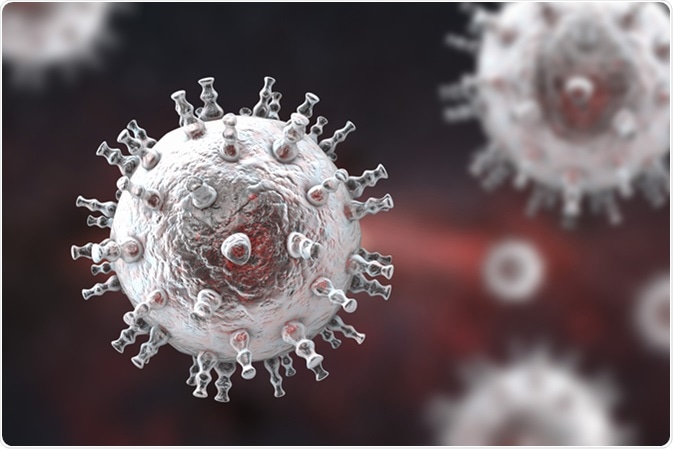Skin cancer affects more than 2 to 3 million people worldwide every year. There are many types of skin cancer, most of which are non-melanoma skin cancers. These include a subset of very rare skin cancers.
Several types of rare skin cancers are:
- Merkel cell carcinoma
- Kaposi sarcoma
- Cutaneous (skin) lymphoma
- Skin adnexal tumors
- Different types of sarcomas
Merkel Cell Carcinoma
Merkel cell carcinoma (MCC) is a type of neuroendocrine carcinoma that is highly aggressive. Merkel cell tumors can be pink, red, or purple in color, and are often firm in nature. They are not usually painful, but are very fast-growing.
Merkel cells are present in the epidermis, adjacent to nerve endings. MCC is caused by the uncontrollable growth of Merkel cells.
There are certain risk factors which can increase the chances of getting MCC, and they include infection with Merkel cell polyomavirus (MCV), UV-light exposure, light-colored skin, elderly age, male gender, and weak immune system. The biggest risk factor is UV exposure, hence MCC is often observed on the face, neck and arms.
Merkel Cell Carcinoma Explained by Mayo Clinic
Kaposi Sarcoma
Kaposi sarcoma (KS) is a type of skin cancer which triggers from the cells present in the lymph node or blood vessels. Normally, the tumor develops on the skin, however, it can also develop on mucosal surfaces including inside of the mouth. KS tumors can be purple, red, or brown in color.
The skin lesions of KS are asymptomatic, and are observed on the legs or face. When the lesions are present in the lungs, liver, or digestive tract, they can pose severe life-threatening challenges.
The KS-associated herpesvirus (KSHV) is a predominant causative agent of KS. Another name of this virus is human herpesvirus 8 (HHV8).
There are different types of KS, and they are:
Epidemic (AIDS-Related) Kaposi Sarcoma
This type of KS frequently occurs in an individual with HIV. HIV infection weakens the immune system, therefore, a person infected with KSHV is prone to develop KS.

Kaposi's sarcoma virus. 3D illustration of a herpes virus type 8 which causes Kaposi's sarcoma in HIV-infected patients. Image Credit: Kateryna Kon / Shutterstock
Classic (Mediterranean) Kaposi Sarcoma
Elderly persons are more likely to develop classic KS. It is more prevalent in men compared to women. Lesions are commonly observed on the legs, ankles, or the soles of the feet of the individuals with classic KS.
Endemic (African) Kaposi Sarcoma
Endemic KS is also known as African KS as it commonly occurs in people residing in Equatorial Africa. Malaria, other chronic infections, and malnutrition in the population result in weakened immune system, hence the incidence of KS is more in Africa.
Iatrogenic (Transplant-Related) Kaposi Sarcoma
Post organ transplants, the immune system of the individual becomes suppressed, which increases the chances of the development of KS in these people.
Cutaneous (Skin) Lymphoma
When the source of the lymphoma is skin but not any other organ or tissue, it is referred to as skin lymphoma or cutaneous lymphoma. Certain risk factors increase the chances of getting cutaneous lymphoma, and they are age, gender, race, weak immune systems, and presence of infections. DNA mutation is the primary cause of skin lymphoma. However, in this circumstance, the mutation of DNA is not inherited but acquired due to infections or some other causes. Skin lymphomas are grouped into cutaneous T-cell lymphoma and cutaneous B-cell lymphoma.
Skin Adnexal Tumors
This type of tumors affect one or more of the tissue structures adjacent to the skin. These include sebaceous glands, eccrine glands, apocrine glands, and hair follicles. Skin adnexal tumors are often sporadic and associated with other genetic conditions.
Sarcomas
These are the neoplasms including connective tissues. Depending on the affected area, they are divided into bone sarcomas and soft tissue sarcomas, each of which are further divided into several subcategories.
Further Reading
Last Updated: Oct 11, 2022